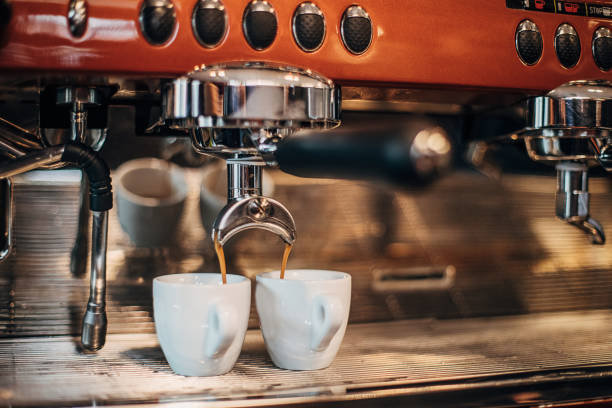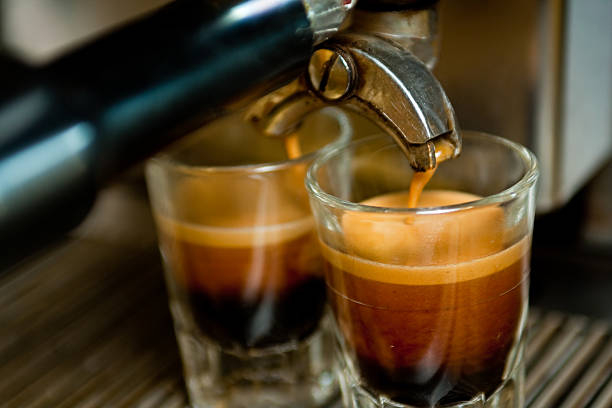Espresso
Espresso is an Italian coffee-brewing method in which a small amount of nearly boiling water is forced through finely-ground coffee beans under 9–10 bars of pressure. Espresso coffee can be made from a wide range of coffee beans and roast levels. Espresso is the most widely used method of brewing coffee in southern Europe, particularly in Italy, France, Spain, and Portugal. It is also well-liked in Switzerland, Croatia, Bulgaria, and Greece, as well as in Australia.
Espresso has the viscosity of warm honey and is generally thicker than other methods of brewing coffee. This is because of the increased concentration of suspended and dissolved solids, as well as the crema on top (a foam with a creamy consistency). The flavors and chemicals in a typical cup of espresso are very concentrated as a result of the pressurized brewing process.
The three dispersed phases in espresso are what distinguishes this beverage. The first dispersed phase is an oil droplet emulsion. The second phase is made up of suspended solids, and the third is made up of a layer of gas bubbles or foam. The mouth perceives the dispersion of very small oil droplets as creamy. This aspect of espresso contributes to what is known as the beverage's body. Some of the aromatic compounds that are lost to the air in other coffee forms are preserved by these oil droplets. This helps to preserve the espresso's strong coffee flavor. Espresso is also the base for many coffee drinks, including latte, cappuccino, macchiato, mocha, flat white, and Americano.












